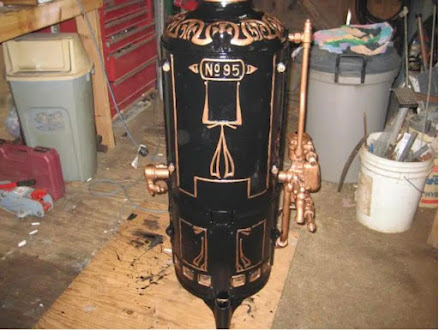Domestic Hot Water Solutions for Older Commercial Buildings
The graying of residential buildings is a very real problem for building
owners, especially in older US cities like New York and Boston. In fact, in a
recent study published using data from NYC’s PLUTO database, one can determine
that the median age of a surviving residential building in greater NYC is over
90 years old!
As initiatives like Local
Law 97 and other go-green rebate programs drive upgrades and
updates to heating system infrastructure,the other frontier in the upgrade of
these buildings has to do with their solutions to domestic hot water and the
ever increasing difficulty of delivering consistent, and safe hot water to
residents. With the dramatic increase in reported cases of deadly legionella
bacteria in the water supply across the country (including recent
outbreaks in NYC) the pressure is on for building owners to provide
updated solutions that satisfy city regulations for safety, provide safe,
consistent temperatures to folks at their sinks and showers, and do it as
efficiently as possible.
Common Problems with Domestic Hot Water Systems in
Older Buildings.
At the end of the day, the net problem is getting reliable hot water to
residents safely, at all hours of the day. Especially so called rush hours,
when demand for showers and such is high. Yet age and other factors conspire to
keep older DHW systems from maintaining their operational readiness.
- Leaky
Storage tanks. – Every tank has a shelf life of 15 – 30
years.
- System
Sizing – Changes to apartment layout, resident
count and increases in peak demand over many decades, can tax an existing
system not designed for it resulting in frequent rebuilds of the
light-commercial gas water heater originally spec’d. These rebuilds are
expensive and wholly unnecessary in a properly sized system.
- Dissolved
Mineral Content – Hard water supplies with high mineral
content can tax piping and valves leading to expensive periodic rebuilds
or replacements that take down hot water for the entire building.
- Temperature
Creep – Older thermostatic mixers can fail in such a way as to
prevent mixing during dormant periods, such as overnight. In these cases,
the first hot water users in the morning can find the hot water initially
arriving at the sink or shower to be almost 160 degrees Fahrenheit, a
temperature that can cause burns and scalding in a matter of seconds.
These mixers then have to be rebuilt causing more expense and downtime not
to mention potential lawsuits.
Heat-Timer® ETS is a Key Part of the Modern Solution
to DHW Upgrades
Whatever heating technology your domestic hot water solution employs, a
good heating design engineer will specify a DHW system designed for
reliability, efficiency, serviceability and longevity. In 2022 with outbreaks
of legionella on everyone’s mind, we must also add Safety to
that list.
One key part of this upgrade is an electronic mixing valve like the Heat-Timer®
Electronic Tempering Valve to finally deliver perfectly regulated
hot water to residents. Heat-Timer® encapsulates this system into our Electronic
Tempering Station (ETS) which is a pre-plumbed, small footprint
assembly saving installers hours and hours of time doing installation, and
limiting overall install downtime. The internal ETV control module uses remote
sensors tied to proprietary algorithms to electronically control one of the
industry’s most durable 3-way stainless steel mixing valves. The Heat-Timer®
ETS can deliver an adjustable domestic hot water temperature to the end user,
under any condition allowing hot water to be stored at a temperature that kills
bacteria, while providing perfectly safe temperatures to users at the sink.
The presence of dissolved mineral content can present a challenge to any
valve design long term. One solution to the reliability requirement of a hot
water system is a level of redundancy in the specification of components. In a
properly designed domestic hot water system, no failure of a single component
should take the system down.
A common solution to this is a dual valve ETS configuration. By
specifying a second ETV or ETS Duplex, piped Isolation valves can be installed
all around the mixing valve. In this way if the motorized valve fails due to
scale, the alternate mixing valve can be immediately engaged, and there is
virtually no downtime to end users. When you are finally able to repair the
other valve, the replacement takes 30 minutes, not all day like before.
For more information on the ETV or ETS in your
domestic hot water solution, call Heat-Timer® today.
This blog was originally published at https://www.heat-timer.com/domestic-hot-water-solutions-for-older-commercial-buildings/






Comments
Post a Comment